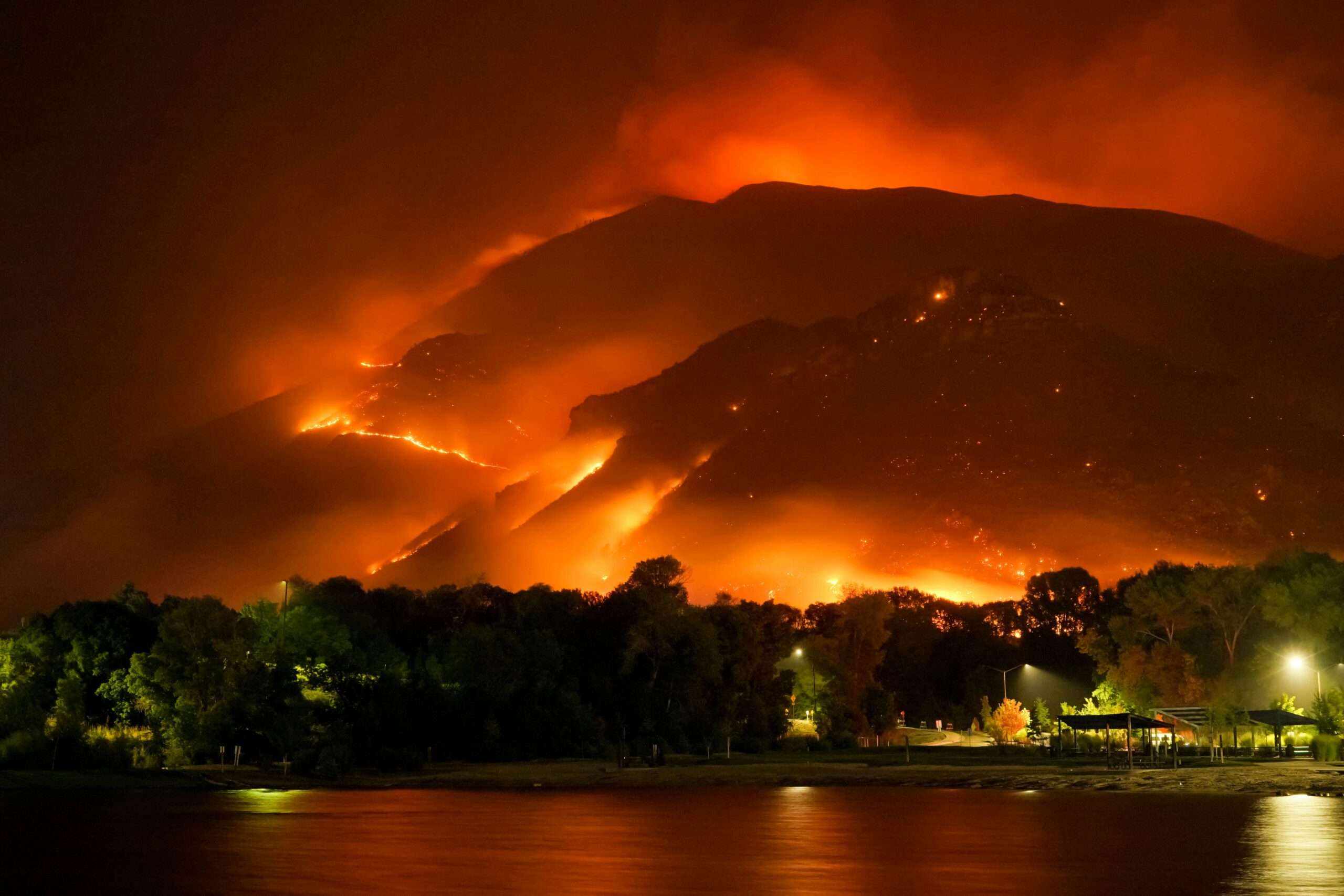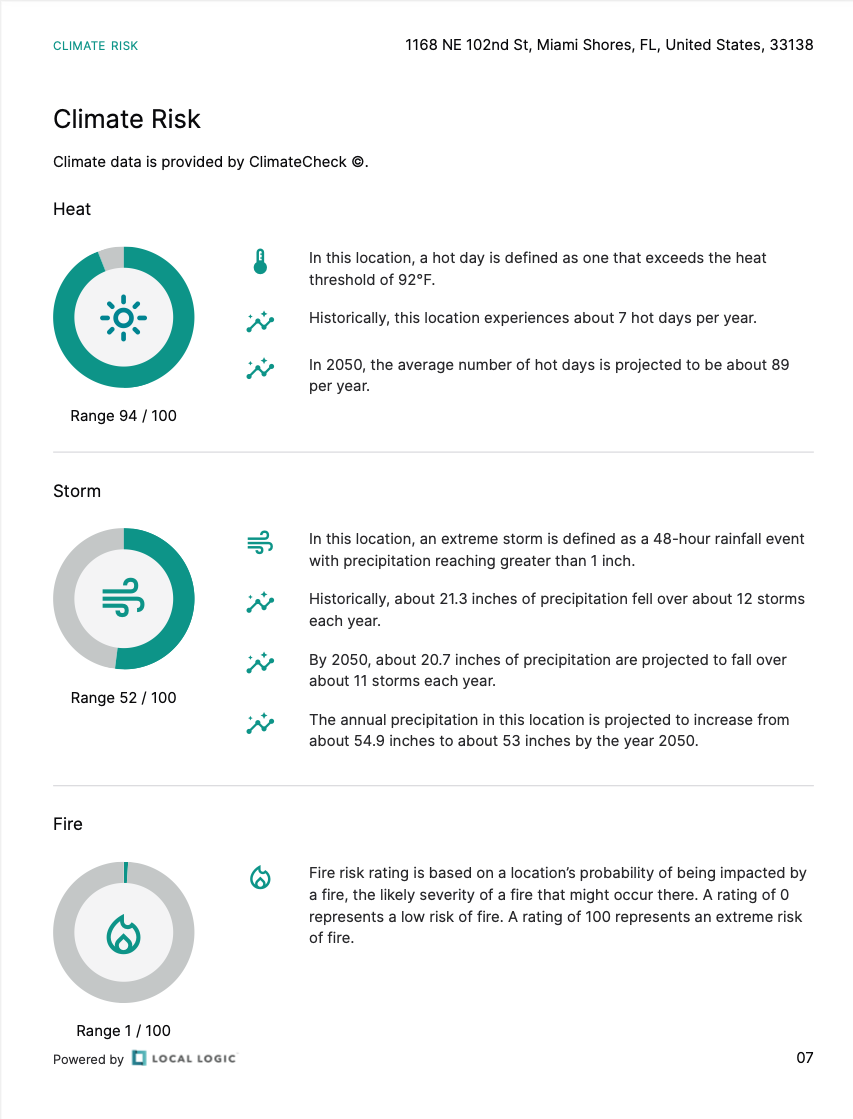Oakley Signs Joins Forces with Local Logic to Bridge the Gap Between Physical Signage and Digital Insights
Partnerships
| 12 Nov 2025

This Earth Day, we’re examining the impacts of climate change on the housing market. From shifting buyer preferences to fluctuating property values and the burgeoning cost of homeownership, the ramifications of our warming planet are undeniable.
In this article, we will explore how climate change is reshaping the real estate landscape through:
Homebuyers’ decisions regarding the location of their next property are significantly influenced by climate change. People are increasingly factoring in climate-related risks when it comes to choosing where they live. Generally, these risks fall into three categories:
Physical climate risks can significantly impact the housing sector, presenting challenges related to both acute and chronic events.
Acute physical risks, driven by extreme weather events and natural disasters, pose immediate threats to properties and communities. With climate change intensifying the frequency and severity of events like hurricanes, floods, and wildfires, homes located in vulnerable areas face increased risk of damage. Coastal properties are particularly susceptible to storm surges and flooding, while homes in wildfire-prone regions are at higher risk of property loss and destruction. The aftermath of these events can result in displacement of residents, destruction of infrastructure, and substantial financial losses for homeowners, insurers, and governments alike.
Chronic physical risks, such as rising sea levels, prolonged heat waves, and droughts, present longer-term challenges for housing. Rising sea levels threaten coastal properties with erosion and inundation, reducing their value and increasing the cost of insurance. Prolonged heat waves can strain infrastructure and exacerbate heat-related health issues, particularly in areas with inadequate cooling systems. Droughts can lead to water scarcity, affecting both water availability for households and the viability of landscaping and agriculture, thereby impacting property aesthetics and values.
These physical climate risks affect homebuyers’ decisions regarding property location, design, and resilience measures. Buyers are increasingly concerned about the vulnerability of potential homes to extreme weather events and long-term climate impacts.
Climate change poses significant economic challenges to the housing sector. One of the most immediate impacts is the rise in insurance rates for properties located in disaster-prone areas. Moreover, the need for additional maintenance to mitigate the effects of climate change further burdens homeowners. For instance, properties in drought-prone regions may require increased irrigation to maintain landscaping and prevent soil erosion. Similarly, homes in areas experiencing more frequent heatwaves may need enhanced cooling systems to ensure habitability, driving up energy costs for homeowners.
Policies aimed at mitigating climate change, such as the implementation of carbon taxes or regulations promoting energy-efficient buildings, can also impact housing economics. While these policies are crucial for addressing climate change, they may impose additional costs on homeowners, such as upgrading insulation or installing renewable energy systems to comply with new standards.
The far-reaching effects of climate change extend beyond the housing market to various industries, notably agriculture and tourism. As climate patterns shift and extreme weather events become more frequent and severe, traditional sectors like agriculture face significant challenges.
The shifting landscape of employment opportunities and risks influences the decisions of homebuyers when selecting the location of their next property. Areas heavily dependent on industries vulnerable to climate change, such as agriculture or coastal tourism, may experience economic downturns and job losses, affecting property values and market stability. In contrast, regions investing in climate-resilient sectors like renewable energy or green technology may see economic growth and increased demand for housing, driving up property prices.
Local employment trends and economic resilience to climate change are increasingly important factors to consider when buying a home. Locations with diverse economies and opportunities for employment in sustainable industries are becoming more attractive, as they offer greater long-term stability and potential for appreciation in property values.
Climate change can detrimentally affect property values. Homes situated in disaster-prone regions are susceptible to depreciation as the frequency and severity of such events intensify.
Regulatory changes, like stringent building codes aimed at enhancing resilience, also influence property values. For instance, homes equipped with renewable energy systems see an uptick in value, reflecting the growing demand for environmentally conscious features.
Homes in high-risk areas may experience diminished demand and lower prices due to:
The demand and pricing of a property are heavily influenced by the location’s vulnerability to climate-related hazards. Properties prone to natural disasters are more likely to depreciate as the frequency and severity of these events intensify. The same is true for chronic climate risks.
In extreme cases, climate change can create “stranded assets” by devaluing properties due to climate-related risks. For example, coastal properties facing increased flood risk or properties in wildfire-prone areas may become uninsurable and, therefore, unmortgageable.
Conversely, properties in regions with milder climates and lower susceptibility to climate-related perils may command higher prices as buyers prioritize safety and stability.
Property values may be affected by regulations aimed at mitigating climate change impacts, such as building codes requiring stronger resilience measures.
In response to climate risks, homeowners, builders, and policymakers are increasing their efforts to make homes and communities more resilient. This includes adopting building codes that incorporate climate-resistant materials and design features, investing in green infrastructure to manage stormwater and reduce urban heat island effects, and implementing land-use planning strategies to reduce exposure to flood and wildfire risks.
Homes that meet or exceed these standards may maintain or increase their value, while properties that require costly upgrades to comply with regulations may see a decrease in value. Energy-efficient homes equipped with features like solar panels or efficient insulation may see an increase in value as buyers seek to mitigate future climate-related expenses. Buyers are increasingly interested in properties with lower energy costs and reduced environmental impact, driving up the value of homes with these features.
Higher insurance costs in high-risk areas can decrease the affordability of homes, potentially reducing their market value. As insurers adjust their risk assessments to account for the increased likelihood of climate-related damage, premiums for homeowners in vulnerable regions rise significantly. This added financial burden may deter potential buyers and lead to decreased demand for properties in these areas, ultimately affecting their value. Additionally, homeowners may find it more challenging to secure affordable insurance coverage, further dampening property values and market liquidity.
The destructive impact of climate change on homes is multifaceted. From acute threats like natural disasters and extreme weather events to chronic issues such as sea level rise and permafrost melting, properties face many risks. Infrastructure strain and indirect effects, such as invasive species infestations, further exacerbate the situation, leading to structural damage and eventual collapse.
Natural disasters: Climate change exacerbates the frequency and intensity of natural disasters such as hurricanes, floods, wildfires, and storms. These events can directly damage or destroy homes.
Extreme weather events: Climate change also contributes to more frequent and severe extreme weather events, including heatwaves, heavy rainfall, and snowstorms. These events can cause damage to homes through flooding, landslides, roof collapse, and other forms of structural damage.
Sea level rise: Rising sea levels due to climate change increase the risk of coastal erosion and flooding, threatening homes located in coastal areas. Over time, erosion can undermine the foundations of buildings, leading to structural damage and eventual destruction.
Drought and water scarcity: Droughts can weaken the foundations of homes, particularly in regions with clay soils that shrink and expand with moisture levels. Prolonged droughts can lead to soil subsidence, causing cracks in foundations and structural instability.
Permafrost melting: In arctic regions, such as Canada, the melting of permafrost destabilizes the ground, which can lead to structural damage, foundation failure, and collapse of homes. As permafrost thaws, it can also create sinkholes, posing additional risks to infrastructure and property.
Climate change can also strain infrastructure systems such as levees, dams, and drainage systems, increasing the risk of infrastructure failure and subsequent damage to homes located in affected areas. For example, compromised levees can lead to flooding, while overwhelmed drainage systems can result in water backing up into homes, causing water damage and mold growth.
Climate change can create favorable conditions for invasive species like termites, which can infest and damage the wooden structures of homes, leading to costly repairs or even structural collapse. Additionally, increased humidity and temperature fluctuations can create ideal breeding grounds for mold and mildew, further compromising the integrity of homes and posing health risks to occupants.
The escalating risks associated with climate change translate into higher insurance premiums, reflecting the increased likelihood of hazards like floods, hurricanes, and wildfires. Moreover, higher energy and utility costs, coupled with expenses related to implementing climate resilience measures, add to the financial burden of homeownership. In regions experiencing water scarcity, conservation efforts incur additional costs, further straining homeowners’ finances.
Insurers are adjusting their risk assessments to account for the increased frequency and severity of climate-related disasters, leading to higher premiums for homeowners. This, in turn, makes it more expensive to own and maintain a property, especially for those in high-risk zones.
Energy and utility costs increase as extreme temperatures lead to greater reliance on heating or cooling systems and irrigation needs. Homeowners may find themselves spending more on electricity or gas to maintain comfortable indoor temperatures amidst rising heatwaves or colder winters. Additionally, increased irrigation requirements for landscaping in response to drought conditions contribute to higher water bills. These rising energy and utility costs strain household budgets, leaving homeowners with less discretionary income for other expenses.
Homeowners are faced with expenses associated with implementing climate resilience measures, such as flood barriers, reinforced structures, and fire-resistant materials, to protect homes from climate risks. These measures often require upfront investment and ongoing maintenance, adding to the overall cost of homeownership. While such investments are crucial for mitigating potential damages and ensuring the safety of occupants, they can pose a financial challenge for homeowners, particularly those with limited resources.
Water conservation measures or alternative water sources are also costly in regions experiencing water scarcity due to climate change. Homeowners may invest in water-efficient appliances, install rainwater harvesting systems, or replace landscaping with drought-tolerant plants to reduce water usage and conserve resources. However, these initiatives require initial expenditures and may involve retrofitting existing infrastructure, further adding to homeowners’ financial burden.
Potential decreases in property value in high-risk areas lead to reduced investment returns and higher mortgage costs for homeowners. Properties located in disaster-prone areas may experience depreciation as buyers factor in the increased risk and potential damages associated with homeownership in these locations. As a result, homeowners may face challenges when refinancing or selling their properties, impacting their financial stability and long-term wealth accumulation goals.
In navigating the evolving landscape of homeownership amidst climate change, access to comprehensive data is paramount. Platforms like Local Logic provide invaluable insights into climate risks, empowering homebuyers to make informed decisions and better understand risks associated with heat, storm, fire, drought, and flood.

Climate risk data as presented in Local Logic’s NeigbohoroodIntel report
As we embrace the challenges posed by a warming planet, integrating these insights into real estate decisions becomes not just prudent, but essential for fostering resilient communities and safeguarding the value of our homes against the shifting climate backdrop.
💡 Curious about location insights?
Get a demo to learn how to grow your business with location data, including climate risk data.